I'm new here and thought I'd share what I like to do to Hot Rod the Fender Hot Rod Amps.
I always felt there was a lot of wasted space in the stock 1x12 HRD cabs and knew that they were almost the exact size as the original 5F4 Tweed Super cabs. Thought I'd give this a go...helps that I have a friend who's a woodworker to help indulge my ideas.
I basically gut the amps, and re-use the transformers, switches, light assembly, and some hardware and build in the new circuit. The Copper Cap is in there to replace the thermistor and lower the B+ to where I want it, depending on which CC I use. To make it work in full-wave, I add a pair of diodes to ground the tube socket to complete the bridge.
I added a bias switch, too, so I can do cathode or fixed-adjustable bias with the flip of a switch.
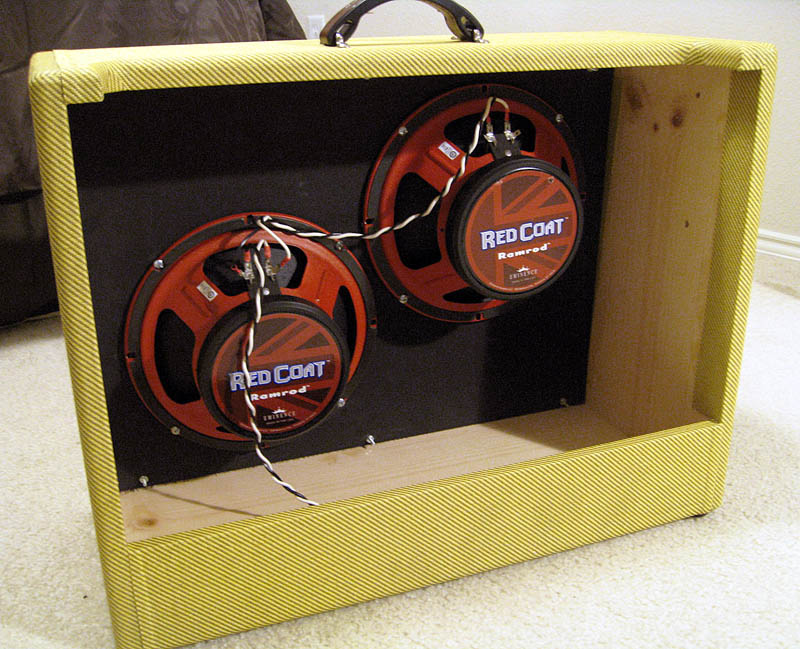
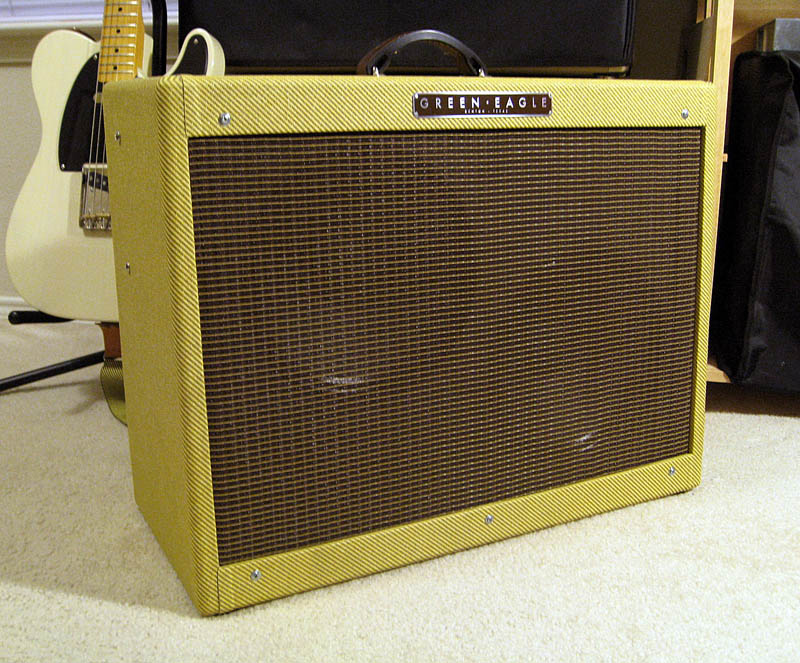
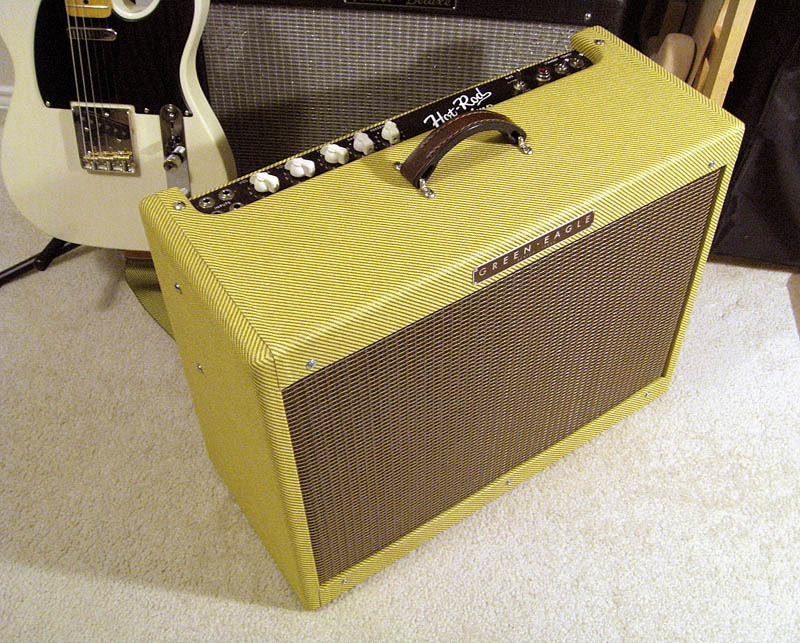
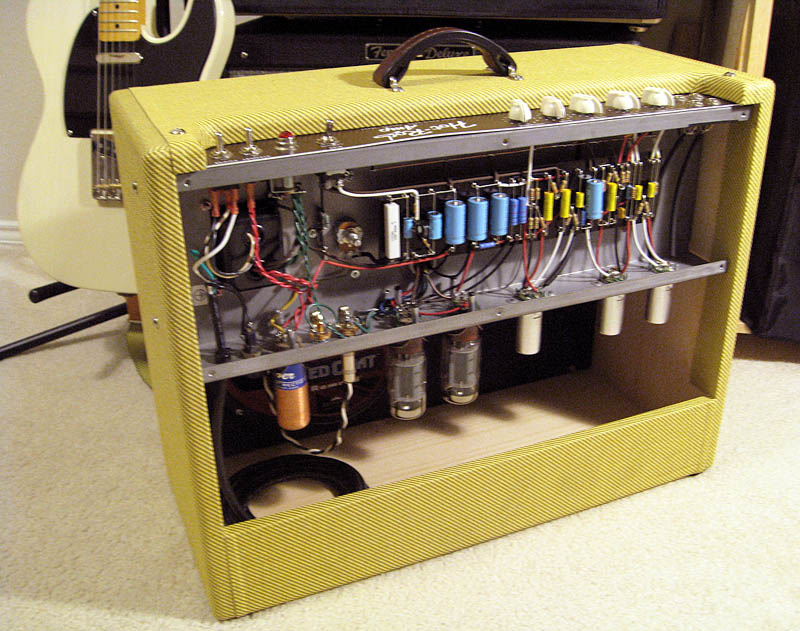
There's a lot more room in the cab than it appears here. Note, the dummy plug in the main speaker jack with speakers run into the ext. speaker jack. This is the trick that I had mentioned that allows running the speakers off the OT 4ohm tap:
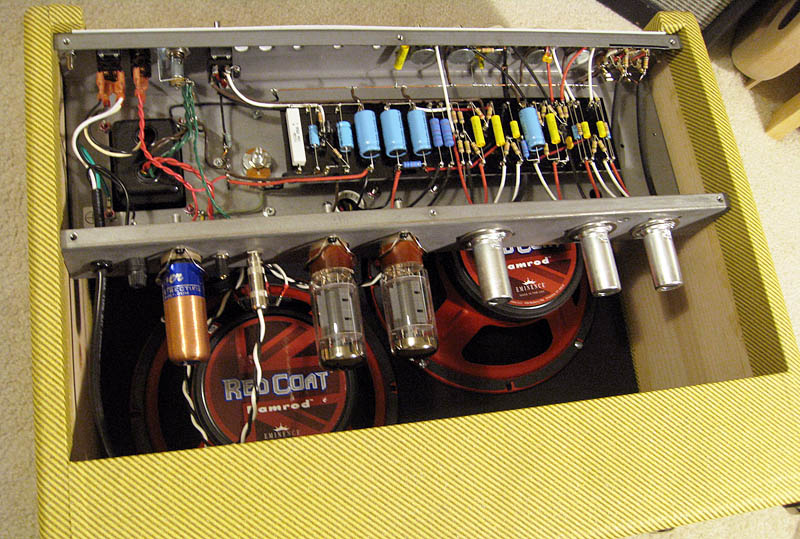
I can't think of anything else to try with this amp now. The circuit is tweaked, I'm running a Tweed-style choke, I've upped the B+ a hair with a new WZ34 Copper Cap (normally I build these with a WV4), I've got the 2x10 setup going...what's left?
Well, I'm going to look for another cheap or dead HRD to try something in a Blonde persuasion methinks. I'm toying with the idea of a 6G9 (vibrato channel only with bright switch) next.
Thanks for looking!
I always felt there was a lot of wasted space in the stock 1x12 HRD cabs and knew that they were almost the exact size as the original 5F4 Tweed Super cabs. Thought I'd give this a go...helps that I have a friend who's a woodworker to help indulge my ideas.
I basically gut the amps, and re-use the transformers, switches, light assembly, and some hardware and build in the new circuit. The Copper Cap is in there to replace the thermistor and lower the B+ to where I want it, depending on which CC I use. To make it work in full-wave, I add a pair of diodes to ground the tube socket to complete the bridge.
I added a bias switch, too, so I can do cathode or fixed-adjustable bias with the flip of a switch.




There's a lot more room in the cab than it appears here. Note, the dummy plug in the main speaker jack with speakers run into the ext. speaker jack. This is the trick that I had mentioned that allows running the speakers off the OT 4ohm tap:

I can't think of anything else to try with this amp now. The circuit is tweaked, I'm running a Tweed-style choke, I've upped the B+ a hair with a new WZ34 Copper Cap (normally I build these with a WV4), I've got the 2x10 setup going...what's left?
Well, I'm going to look for another cheap or dead HRD to try something in a Blonde persuasion methinks. I'm toying with the idea of a 6G9 (vibrato channel only with bright switch) next.
Thanks for looking!

Comment